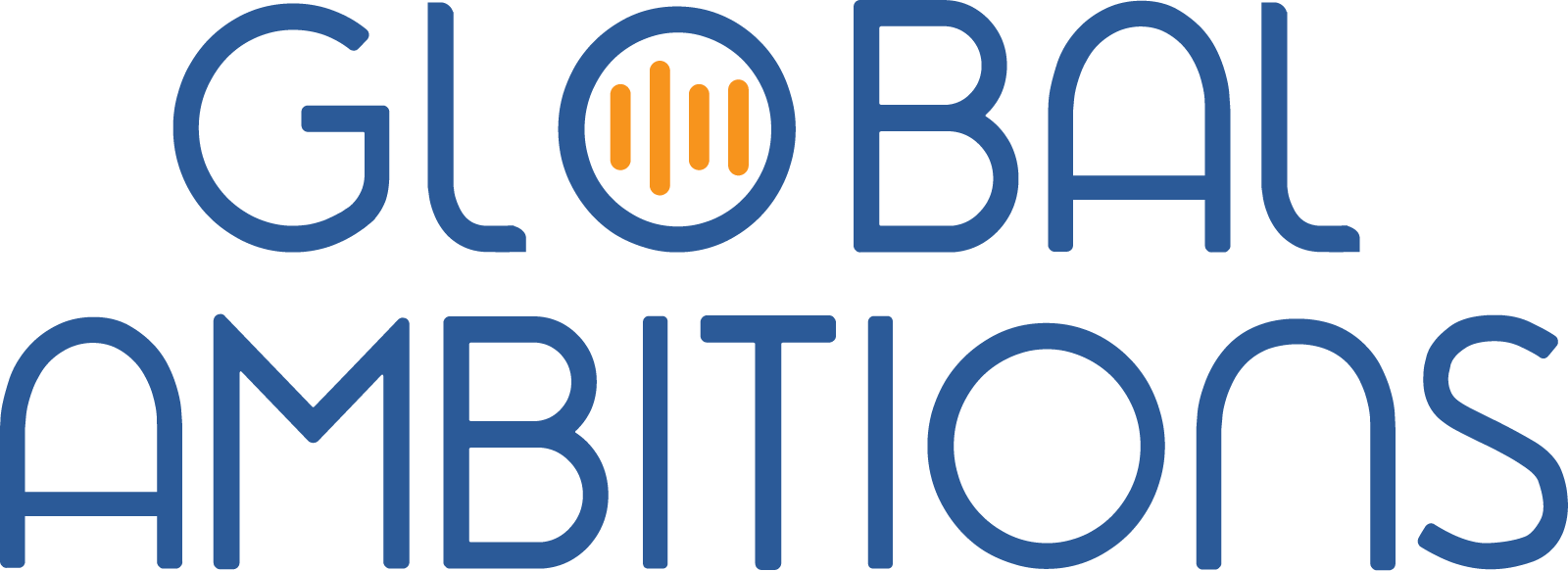With Sasan Banava, Senior Director of Globalization at Square
Below is a full transcript of the episode
Antoine Rey
Hi, I’m Antoine Rey and I will be your host today for this global ambitions podcast episode, my guest today is Sasan Banava, who is a Senior Director of Globalization at Square. And today we will be talking on how to talk to the C suite. Sasan, welcome to the program.
Sasan Banava
Thank you, Antoine, for having me.
Antoine Rey
I think there are a lot of people in the localization industry that have been thinking that we’re doing a little bit too much navel-gazing, however, we’re trying to position localization globalization as a strategic function and a revenue contributor in a lot of cases. But can you maybe discuss from your point of view why that is important from your experience at the companies that you’ve been working at?
Sasan Banava
Sure. Great question, Antoine. Many large enterprise companies think of their globalization teams as a cost center and not a revenue center. And from my perspective, it is an opportunity loss. Under a cost center, the localization team turns into generally purely an operation center in its worst case, and if they’re not even doing a good job, they would be labeled as a vendor inside the company.
In successful cases, it is seen as a revenue-generating team that expands products and services globally. So it becomes the job of the globalization leader to position the team internally to be understood as not only providing translation, localization, and internationalization services but also acting as a trusted consultant for market and language expansion, enabling products and services in all regions.
A couple of industry examples. From what I recall in the past CEOs, Meta, and Netflix, for instance, used to discuss with their global globalization leader the next set of markets to expand to bring more users and revenue. In my own example at Google, the majority of established products, revenue came from outside of the US so many years ago, we had a 40-language initiative by our CEO that later on turned into a 60-plus language initiative to enable products and services in 40 languages to reach 90% of Internet users.
As internet reach expanded globally, for example, in India and other places, then the need to increase the number of languages to reach 90% of users also grew. So that’s why we have more languages.
At Uber, when I joined in late 2015, there was no localization team, only half a person and the translation management software connected to a vendor providing translations. Part of my job in the process of building out the team from ground was to pitch the need for centralizing our localization team to the CEO. And we did that by showing data that the majority of successful Silicon Valley High Tech global brands employ the hybrid model of localization globalization team, meaning some key full-time employees in-house plus a large vendor pool for translation, review, QA services distributed globally. With the CEOs approval, we were able to start building out the team’s centralized operation RFP for new translation vendor and then another RFP for translation management software.
And I’ll end up by a couple of generic advice as far as the revenue contribution is that the goal at any company is globalization teams should be moving the localization maturity model a score to a higher number, this is a concept featured at the Common Sense Advisory website. And once this is done, more automation is in place, internationalization foundations are set, we can earn more of the trust of the and respect of internal users. And we can have a much easier time discussing revenue impact or how we can contribute to global expansion.
Antoine Rey
Thanks for this input, Sasan. I work with a lot of organizations that have different levels of localization maturity that you mentioned there. And in their unit, they might be quite mature. But as an organization, they’re still very decentralized and trying to convince the rest of the organization to centralize, standardize and get to higher levels of maturity, which is probably a prerequisite to get to that perception of revenue contribution, I guess, and then being a strategic function of the organization. And they’re struggling to do that.
So you mentioned that you had the CEO, for instance, on board with whatever initiatives that you were trying to put in, how important is it like for you to get that involvement, to have that sphere of influence to help you?
Sasan Banava
It is critical to get the right level of attention engagement from the C suite and Senior management. As I mentioned earlier, first you need to showcase operational excellence, cost, quality, speed optimization for your team and demonstrate you can scale the business and efficiently support your internal partners and end users while staying up to date with technological advancements and automation. Whether it’s machine translation, automated workflow AI, now we’re discussing generative AI these days, you need to effectively manage up, always evangelize and have a good communication strategy for various stakeholders, meeting new leaders, and get alignment on how you can support them. Over time, this will give you enough momentum to reach the C suite.
Once you have your vision, mission, strategy, and roadmap in place and alignment with your team is done, then you need to start engaging with senior stakeholders to get support. You need to understand and read the landscape. See what your CEO and executive teams are focused on. If it’s budget management, showcase that. If it’s the quality of products, ensure high linguistic quality. If it’s a speed of product deployment, ensure globalization processes are enabling that it’s not going to be possible to focus on everything at once. So you need to prioritize at different stages of what you can focus on.
Beyond what I call internal metrics of cost, quality, speed, you want to move to more valuable metrics, such as Active Users, revenue generated, you know, in active engagement, and how your finance defines those and then how to work backwards to tie it to the globalization team. And I can give a couple of examples.
So at Uber, once we had our updated vision, mission, strategy, and deck, we were able to successfully pitch it to our CPO, who then gave us valuable feedback and then unblocked us by connecting us to the CTO and CMO. We had one top-level request per C-level executive. For CPO, we were basically asking to have the product team to systematically engage us earlier in the product development process, meaning at the design phase, and again, engage us at the translation phase. And at the last phase, linguistic QA, and bug fixing.
Our request for CTO was allocated a point of contact to interface our team from the product engineering area. So one engineer, tech lead, or edge manager who could be our localization PGM point of contact and, you know, connect us back to the product lineage team.
From the CMO, we were asking to share global marketing plans on a quarterly basis, so our team can plan accordingly and report. In every product that Uber, through experimentation, ran, we saw that, for instance, driver onboarding, in the native language of the driver brings more driver retention and ultimately more revenue. So this last one is an example of working with finance to showcase the incremental impact of having product and services in the language of the end user.
Antoine Rey
So you get those different metrics beyond what you usually get from your language service providers, QBR, that are usually associated with cost per word, number of words and by language and things are but more like, really the engagement of your daily active users, monthly active users in a given region, or in a given country, showing the trends and the impact it has on revenue, right?
Sasan Banava
Exactly the vendor QBR is you get the operational metrics cost, quality, speed, that you can cross-check internally with your own data. But with the product, engineering, finance and partnering with those and running experimentation, you can get access to market data, international revenue of your product and services. And you can focus on tiering your languages and giving the proper level of service to tier-one languages and regions that give the majority of the revenue and have an appropriate level of service and support.
Antoine Rey
Are there specific questions that you ask to the C suite select to be relevant and to not waste their time, I guess?
Sasan Banava
This is kind of a part of understanding the reading the landscape, aligning with the executive team with your manager that’s connecting to the CEO to see what their primary focus is. You know, as I mentioned earlier, if they’re focused on budget, you want to showcase that and then you use that as an opportunity to improve operational excellence. And once you do that consistently, again, your goal is to always have a seat at the table and be able to advocate for globalization and bring up the challenges. And again, your Northstar is to switch the thinking from operation and cost center to revenue generating and market expansion.
Antoine Rey
So what are some of the pitfalls that you would want to advise listeners to avoid that you may have come across yourself along the way?
Sasan Banava
Pitfalls would be not reading the landscape, not understanding where a company’s maturity score is, and trying to do things too fast. You may burn out your team. Everyone’s working too hard. So as an example, if you’re, let’s say, you’re just starting out building a team, your maturity model score is maybe zero. There is no team. You need to focus on next immediate steps, you know, don’t have a grandiose plan to get your team to a much, much higher score too fast.
Understand what are the big points, you know, focus your energy and attention on things you can control, you need to demonstrate flexibility. Sometimes, if you knock on the door, sometimes the door is open the product and engineering already want to get in touch with you. Kind of read those clues. I think it’s important. You want to form productive alliances inside the company, but you don’t can do that in a forced manner.
Antoine Rey
Okay, what about getting access to the data that you’re looking for? Because I know like for operational data, that’s pretty easy from your LSPs or from your TMS. But for the data you’re looking for daily active users and growth in a given country of revenue? How do you manage that?
Sasan Banava
Absolutely. I mean, there are literally 1000s of actions you have to take to move the maturity model score of your team to the next level. And that includes, you know, from vendor management, your software, your processes, your data, and analytics, and the structure of the team, you know, how you support stakeholders, and so on and so forth. And you’re absolutely correct, Antoine, one of them is analytics and data and you want to start with what’s available.
I mean, at the first level, it would be just you’re going based on vendor data, right to look at operational metrics, and then you start having your own data maybe to cross check against vendor data in parallel, or at some point linearly sequenced afterwards. Once you’re at a better state, you can look at what data is available internally on the revenue from different regions, what are the active users, you know, and partner with analytics and finance inside the company, and product teams. Maybe give access to each product to have a separate dashboard.
So it’s a bit of a long, arduous journey because data may not be available, and may not be perfect. So you just have to keep revising your model as maybe the data you have two years from now may not be what you have right now. And definitely, you want to have a globalization analyst at some point in your team. This is what I had at Uber. A role I created, what I also have at Square.
Antoine Rey
And what did you find the importance of having face-to-face meetings with the various stakeholders? And as opposed to like, we all have remote teams, and sometimes it’s not easy to meet face to face; it’s more expensive. And during COVID, it was impossible. But would you advise to go and travel the world and go and meet?
Sasan Banava
Yeah, the company policy obviously dictates that, you know, if you’re a remote-first company, you just have to proactively plan to see when the partners off sites are when your team is off site or just planned for face-to-face connection. Yeah, I still believe that it’s important to connect in person. But in absence of that, obviously set up a video chat meeting to meet and greet your internal partners, and utilize strategically opportunities that present themselves.
So for instance, if we have global offsite for a product or engineering or marketing stakeholders in our office, you can reach out to those teams to see if they can connect with you or your team members to discuss, you know, items relevant to globalization. So, in short, adapt to the environment and do the best you can.
Antoine Rey
Yeah, I like your alignment to your sphere of influence into the strategic objectives of your organization. I think it was Tim Arata from Locale Solutions that wrote an article about that it said like “Evangelization is dead, you need to align to the strategic objectives of your company.” And I think that’s very true.
Sasan Banava
Absolutely. One of them we call it eternal education. You want to evangelize at the same time, you want to align that with what are the goals and objectives at the company level, at the team level, you know, your cross-functional stakeholders.
Antoine Rey
Okay. Great Sasa. And it’s been a pleasure to have you on the show, really; thank you for your participation. I’m sure the listeners will get a few nuggets out of this to implement the data in their own companies. Thank you very much.
Sasan Banava
Thank you, Antoine for having me, and it was great chatting with you





